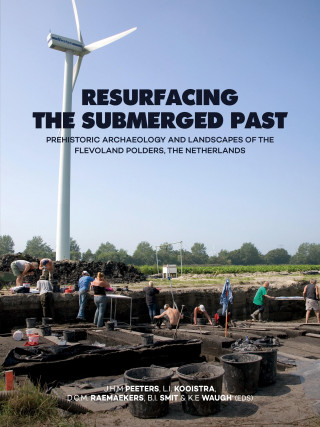
Kód: 36983598
Resurfacing the Submerged Past
The Netherlands are internationally renowned for the archaeology of its wetland environments. The reclamation of the Flevoland Polders in the early half of the 20th century not only exposed hundreds of shipwrecks, but also remnant ... celý popis
- Jazyk:
 Angličtina
Angličtina - Väzba: Brožovaná
- Počet strán: 310
Nakladateľ: Sidestone Press, 2021
- Viac informácií o knihe

Mohlo by sa vám tiež páčiť
-

Cambridge Encyclopedia of Human Evolution
106.08 € -

Europe Between the Oceans
34.08 € -5 % -

Panorama of the Enlightenment
71.69 € -

Perfect Planet
29.86 € -14 % -

Tři kameny jsou zeď
14.87 € -20 % -

After Man: Expanded 40th Anniversary Edition
26.94 € -23 % -

Anthropocene
43.93 € -

Man the Hunted
73.70 € -

Bog Bodies Uncovered
26.94 € -23 % -
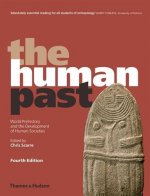
Human Past
71.49 € -

Across Atlantic Ice
42.93 € -
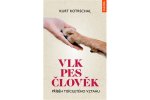
Vlk pes člověk
12.36 € -21 % -

Deník
16.88 € -5 % -

Kniha o medicíně
24.73 € -10 % -

Story of Us
36.89 € -

How Zoologists Organize Things
25.73 € -5 % -

Ancient Near East: A Very Short Introduction
11.45 € -23 % -
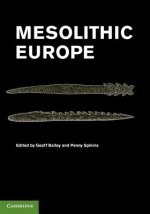
Mesolithic Europe
70.78 € -

Geology: A Complete Introduction: Teach Yourself
16.28 € -23 % -

Život ve středověku
12.96 € -11 % -

Liečba duchom
11.86 € -22 % -
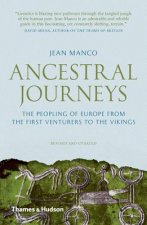
Ancestral Journeys
14.17 € -23 % -

Bruegel - The complete paintings
25.63 € -
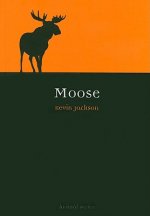
Moose
17.08 € -13 % -

Slovník súčasného slovenského jazyka opn
46.04 € -

Jako člověk
13.77 € -12 % -

Sťahovanie ľudstva od praveku až po súčasnosť
16.88 € -
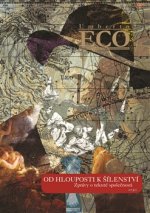
Od hlouposti k šílenství
14.07 € -11 % -

Z dějin české každodennosti
14.47 € -6 % -

Great Paleolithic War
59.72 € -9 % -

Bratři Kipové
13.97 € -11 % -

Anatómia ludskej deštruktivity
18.59 € -21 % -

Hunter-gatherer's Guide To The 21st Century
23.02 € -19 % -

Life of P.T. Barnum
25.23 € -

History of Terrestrial Mammals in South America
174.25 € -

War Zone Zoo: The Berlin Zoo and World War 2
10.45 € -

World Prehistory and Archaeology
117.94 € -

Mining: A Very Short Introduction (Paperback)
12.36 € -9 % -

Floods, Famines, and Emperors
32.12 € -

Dinosaur Doctor
22.51 € -13 % -

Mammoths, Mastodonts, and Elephants
65.15 € -

The Story of Earth′s Climate in 25 Discoveries – How Scientists Found the Connections Between Climate and Life
44.03 € -1 % -

Life in a Cave
7.03 € -4 % -
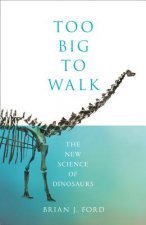
Too Big to Walk
35.49 € -

Crystal Palace
23.92 € -14 % -

Incredible Archaeology: Inspiring Places from Our Human Past
40.11 € -5 % -

Jean-Baptiste de Lamarck (1744-1829) und 150 Jahre 'Lamarckismus', 2 Teile
255.30 € -

Cataclysms
34.18 € -
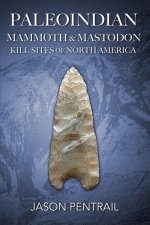
Paleoindian Mammoth and Mastodon Kill Sites of North America
20.91 € -

ALL THE MAMMALS OF THE WORLD
99.94 € -

Brief Natural History of Civilization
29.55 € -9 % -

Clara the Rhinoceros
40.41 € -5 % -

History of Climate Change: From the Earth's Origin s to the Anthropocene
29.05 € -14 % -

Our Fragile Moment: How Lessons from the Earth's Past Can Help Us Survive the Climate Crisis
31.36 € -

50 Greatest Prehistoric Sites of the World
9.95 € -22 % -

Life on Display
122.27 € -

Lindow Man
7.63 € -13 % -

Scenes from Prehistoric Life
26.94 € -23 % -

Creating the Human Past
23.22 € -

On the Ocean
38.70 € -5 % -

THE INVENTION OF WORDS
28.55 € -18 % -

FARMING
30.36 € -13 % -

Exploration and Discovery - Treasures of the Yale Peabody Museum of Natural History
24.22 € -10 % -

In the Shadow of the Sabertooth
17.89 € -
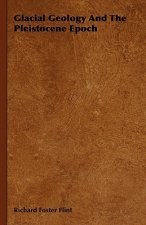
Glacial Geology And The Pleistocene Epoch
56.80 € -

Zoo Studies
55.09 € -

Nonzero
14.17 € -23 % -

Great Human Diasporas
30.86 € -

Key Questions in Zoo and Aquarium Studies
27.74 € -5 % -

Death by Nature?
20.91 € -23 % -

Explorers of Deep Time
42.73 € -
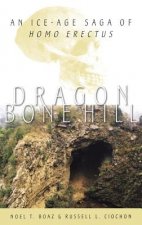
Dragon Bone Hill
49.97 € -

Starring T. Rex!
24.12 € -

The Neandertals: Changing the Image of Mankind
110.90 € -

Extinction: A Radical History
19.60 € -
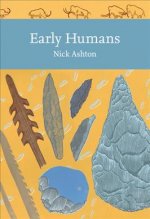
Early Humans
37.50 € -23 % -

American Serengeti
46.25 € -

Origins of Museums
59.22 € -14 % -

Jak chráníme ohrožené druhy - Od záchrany ZOO Tábor k pomoci zvířatům v nouzi
9.14 € -11 % -

Historie šílenství v době klasicismu
20.91 € -5 % -

Příběh lvice Elsy
8.03 € -21 % -

Freud
15.88 € -23 % -

Az ember tragédiája
8.44 € -21 % -

Temná data - Proč záleží na tom, co nevíme
14.77 € -11 %
Darčekový poukaz: Radosť zaručená
- Darujte poukaz v ľubovoľnej hodnote, a my sa postaráme o zvyšok.
- Poukaz sa vzťahuje na všetky produkty v našej ponuke.
- Elektronický poukaz si vytlačíte z e-mailu a môžete ho ihneď darovať.
- Platnosť poukazu je 12 mesiacov od dátumu vystavenia.
Viac informácií o knihe Resurfacing the Submerged Past
Nákupom získate 193 bodov
 Anotácia knihy
Anotácia knihy
The Netherlands are internationally renowned for the archaeology of its wetland environments. The reclamation of the Flevoland Polders in the early half of the 20th century not only exposed hundreds of shipwrecks, but also remnants of prehistoric landscapes and traces of human occupation dating to Mesolithic and Neolithic times. Ultimately, this led to the 'discovery' of the Swifterbant Culture in the 1960s-1970s, and which was initially seen as a Dutch equivalent of the Ertebølle Culture.Archaeological investigations conducted by the University of Groningen, and later also the University of Amsterdam, delivered important new data on the nature of the Swifterbant Culture. It became key in the discussion about the adoption of crop cultivation and animal husbandry by hunter-gatherers living in wetland environments. Also, the Swifterbant Culture became central in the debate on the meaning of archaeologically defined 'cultures', questioning relationships between social interaction and material culture. With the increase of urbanisation and infrastructural works, alongside changes in the Dutch Monuments Act, dozens of small and large-scale development-led investigations got initiated at the turn of the century.One project involved the construction of the Hanzelijn railway, crossing one of the polders from West to East. Archaeologists became aware that much of what was known - and unknown - about the prehistoric past of the Flevoland Polders, was not easily accessible. It was therefore decided to bring together, as much as possible, all the information from the many scattered sources, and make it accessible to professionals, both inside and outside the Netherlands. The result is this book, which presents an overview of the most important sites and data, and what these learn us about the nature of the archaeological record, landscape change, prehistoric subsistence, ritual behaviour, as well as socio-cultural developments during the Mesolithic and Neolithic.Previously considered an impossibility, 'fossilised' fields, discovered at Swifterbant, demonstrate crop cultivation in wetland environments in an early stage of the Neolithic. In fact, the prehistory of the Flevoland Polders is tightly connected to the dynamic nature of the extended wetlands that characterised the landscape since the end of the last glacial. Although often regarded as the 'margin' of cultural dynamics in the past, we can now see that the Flevoland Polders were right in the centre of fundamental long-term changes in human existence in NW Europe.ContentsChapter 1 Introduction of the Hanzelijn Archaeological Project (K. E. Waugh ( ), W. Hessing and J. Flamman)Chapter 2 The cradle of the Swifterbant culture: 50 years of archaeological investigations in the province of Flevoland (D.C.M Raemaekers and J.H.M. Peeters)Chapter 3 Hidden landscapes: mapping and evaluating deeply buried remains of human activity (J.H.M. Peeters and B.I. Smit)Chapter 4 Exploiting a changing landscape: subsistence, habitation and skills (J.H.M. Peeters, T. ten Anscher, L.I. Kooistra, L. Kubiak-Martens and J. Zeiler)Chapter 5 People, ritual and meaning (D.C.M Raemaekers)Chapter 6 From land to water: geomorphological, hydrological and ecological developments in Flevoland from the Late Glacial to the end of the Subboreal (L.I. Kooistra and J.H.M. Peeters )Chapter 7 Transformations in a forager and farmer landscape: a cultural biography of prehistoric Flevoland (J.H.M. Peeters, L.I. Kooistra and D.C.M. Raemaekers)Site Atlas: Windows of observation: the quality, nature and context of excavated sites in Flevoland (T.Hamburg and B.I. Smit)Bibliography
 Parametre knihy
Parametre knihy
Zaradenie knihy Knihy po anglicky Humanities Archaeology Archaeology by period / region
76.71 €
- Celý názov: Resurfacing the Submerged Past
- Podnázov: Prehistoric Archaeology and Landscapes of the Flevoland Polders, the Netherlands
- Jazyk:
 Angličtina
Angličtina - Väzba: Brožovaná
- Počet strán: 310
- EAN: 9789464260380
- ISBN: 9464260386
- ID: 36983598
- Nakladateľ: Sidestone Press
- Hmotnosť: 878 g
- Rozmery: 212 × 280 × 20 mm
- Dátum vydania: 28. December 2021
Obľúbené z iného súdka
-

Lifeways of Hunter-Gatherers
34.28 € -15 % -

Lost Technologies of Ancient Egypt
23.12 € -10 % -

Magicians of the Gods
14.97 € -10 % -

Egyptian Hieroglyphs for Complete Beginners
16.48 € -10 % -

Horse, the Wheel, and Language
32.17 € -

War before Civilization
28.55 € -

Petra
8.84 € -23 % -

Cat in Ancient Egypt
12.06 € -22 % -

Complete Pompeii
21.61 € -23 % -

Book of Enoch
37.10 € -
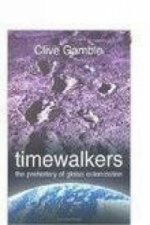
Timewalkers
20.10 € -5 % -
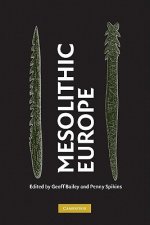
Mesolithic Europe
141.27 € -

American Beginnings
84.16 € -

Stone Age Prehistory
33.37 € -

Her Cup for Sweet Cacao
66.16 € -10 % -

Against the Grain
20.10 € -12 % -

Dress Accessories, c. 1150- c. 1450
35.69 € -14 % -

Rise of Bronze Age Society
80.03 € -

Lewis Chessmen: Unmasked
9.74 € -15 % -
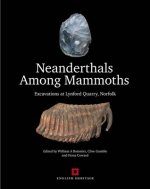
Neanderthals Among Mammoths
205.53 € -

Biblical Archaeology: A Very Short Introduction
9.95 € -22 % -

Bible Unearthed
21.81 € -

Seismosaurus
113.52 € -

Treasures of the Valley of the Kings
33.27 € -6 % -

Divine Creatures
26.24 € -1 % -

Tutankhamun
32.17 € -23 % -

Hieroglyphics
29.35 € -4 % -
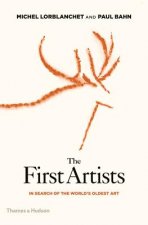
First Artists
21.51 € -23 % -

In Search of the Indo-Europeans
30.36 € -11 % -

Performance Power and the Art of the Aegean Bronze Age
60.12 € -

Tasting the Past
26.74 € -4 % -

Classical Archaeology 2e
42.73 € -5 % -

Upper Pleistocene Prehistory of Western Eurasia
83.75 € -

Humans at the End of the Ice Age
209.05 € -

Medieval European Coinage: Volume 14, South Italy, Sicily, Sardinia
90.59 € -

Prehistory: A Very Short Introduction
11.55 € -14 % -
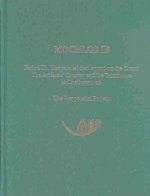
Mochlos IB
111.61 € -

Salt in Prehistoric Europe
38.70 € -

Prehistoric Rock Art
43.13 € -

Medieval Household
44.34 € -20 % -

Complete Cities of Ancient Egypt
30.36 € -13 % -

First Signs
13.06 € -23 % -

Neanderthal Legacy
58.82 € -

Prehistory Of The Mind
16.28 € -23 % -

Kindred
24.43 € -21 % -

Oxford Handbook of the Bronze Age Aegean
78.83 € -

Egyptologists' Notebooks
34.28 € -23 % -

Aegean Art and Architecture
23.72 € -23 % -

Religion and Ritual in Ancient Egypt
35.49 €
Osobný odber Bratislava a 2642 dalších
Copyright ©2008-24 najlacnejsie-knihy.sk Všetky práva vyhradenéSúkromieCookies



 21 miliónov titulov
21 miliónov titulov Vrátenie do mesiaca
Vrátenie do mesiaca 02/210 210 99 (8-15.30h)
02/210 210 99 (8-15.30h)